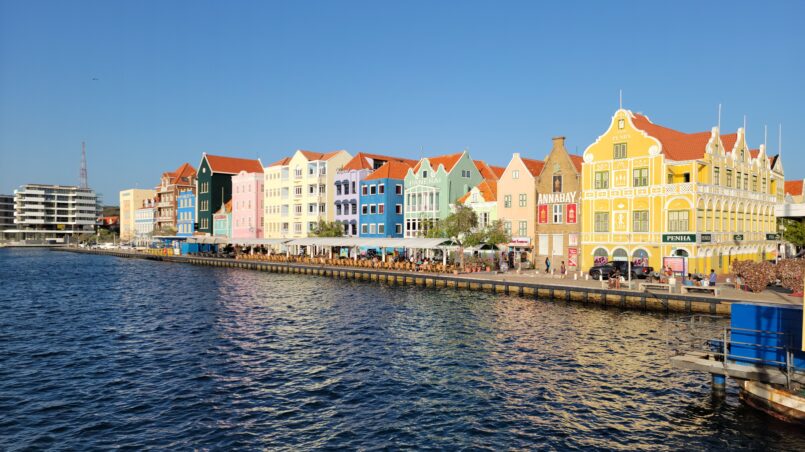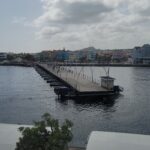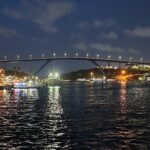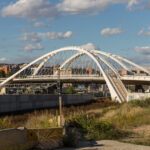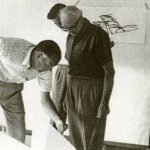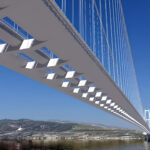In this edition of TheBridgeGuy we’re photo blogging the bridges of Willemstad. The Dutch influence on Curaçao really becomes apparent in the capital, particularly in its bridges. If you’ve ever been to Amsterdam, you’ll notice the distinct style of movable bridges that are abundant throughout the city. These are known as double-beam or seesaw drawbridges, a specific type of bascule bridge.
Unlike conventional bascule bridges, a double-beam drawbridge has two parallel rotating beams – one at roadway level (the bridge deck) and one above the roadway (the balance beam). In this way, the counterweight is separated from the deck to be lifted. This results in a slimmer bridge profile – a conventional bascule with a combined balance beam and bridge deck would need a substantial truss to carry both live load and the counterweight.
Among the double-beam subset of bascule bridge are the Hamei style and the Amsterdam style. Hamei style bridges have a single tower (actually called a hamei gate) and a single moving leaf. Amsterdam style bridges have the balance beam pivot point located directly in line with the hamei, as opposed to slightly behind it.
Willemstad has three double-beam bascule bridges, all three span across the Waaigat between the Punda and Scharloo districts. The Waaigat is a small harbor that is connected to Sint Anna Bay to the west. It was initially larger than it is today, with portions of it being filled in during the 19th century. A tram line used to encircle the Waaigat, the rails are still visible in some places. Willemstad’s floating market is located on the shore of the Waaigat.
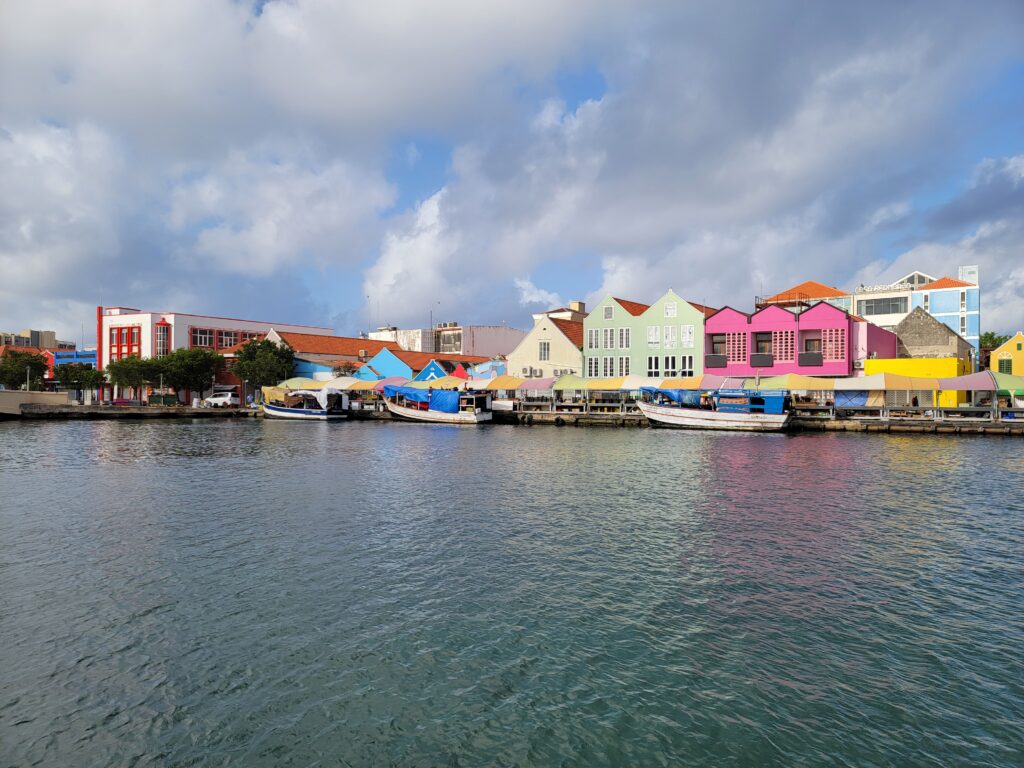
The easternmost of the three bridges is the Princess Amalia Bridge, named in honor of Crown Princess Catharina-Amalia of the Netherlands. The bridge is a 26 meter long by 2 meter wide pedestrian only bridge intended to connect the Scharloo parking lot and movie theater with the circular new market in Punda.
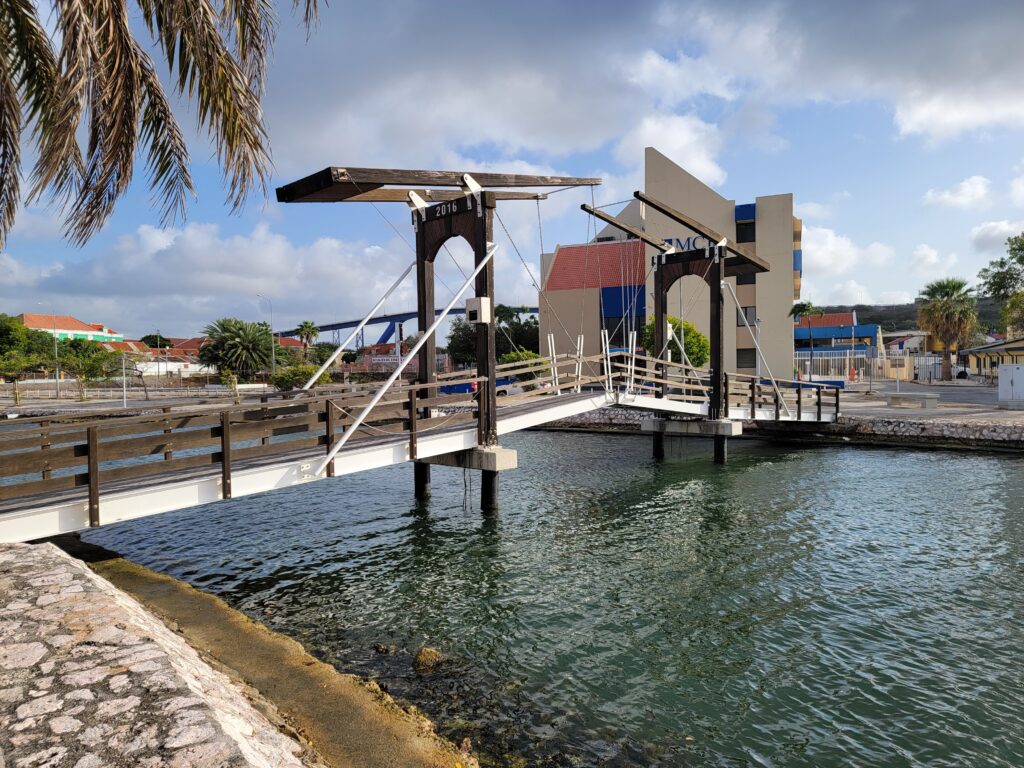
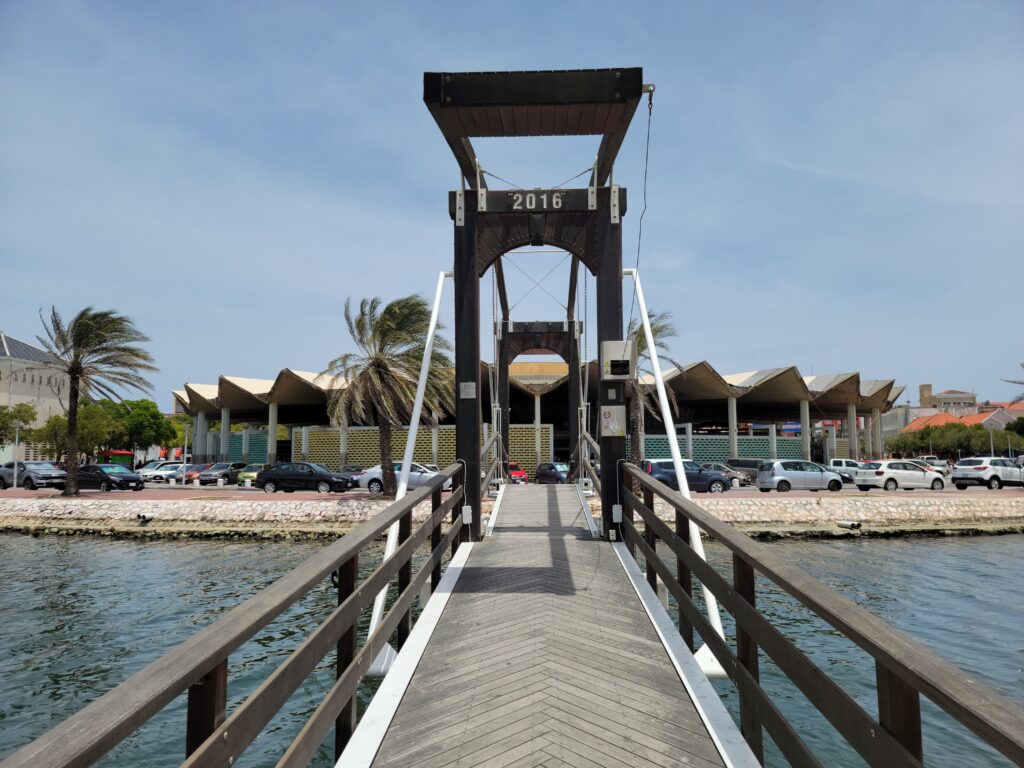
The bridge was designed and built by Dutch firm Meerdink Bruggen and opened in 2016. It was prefabricated in Winterswijk then shipped to the island and assembled on site. The balance beams are hinged slightly behind the wooden hamei. The bridge decks are suspended from the balance beams and hamei by steel chains. Steel wire is attached between the counterweight end of the balance beams and a winch mounted to the hamei. The bridge is opened by the winches, which pull the counterweight ends down.
The middle bridge is the Queen Wilhelmina Bridge, built in 1928 to connect the residential Scharloo district with the commercial Punda district. Named for Queen Wilhelmina of the Netherlands, who reigned from 1890 to 1948. The bridge carries a single traffic lane and sidewalks.
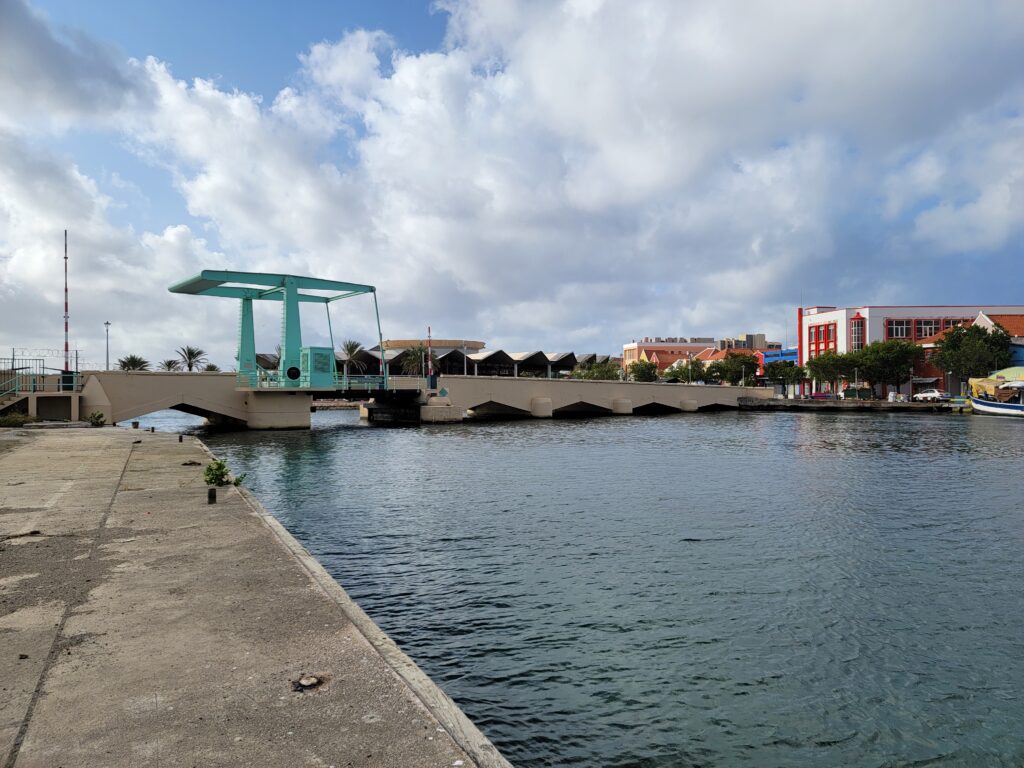
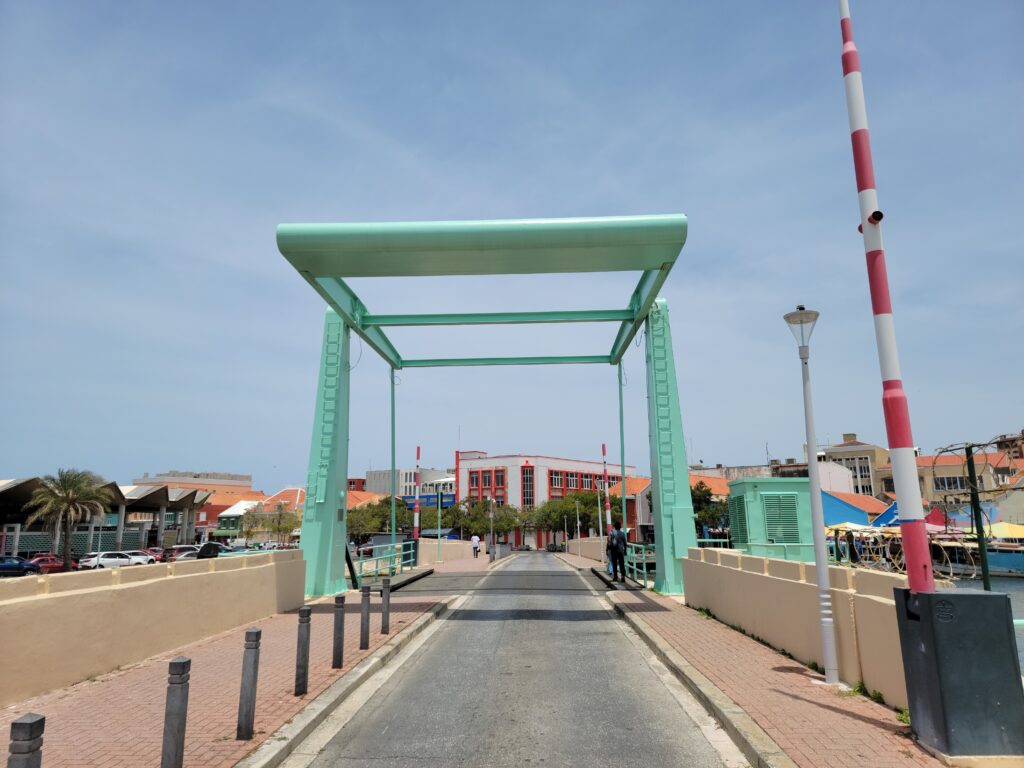
Originally, it was both a Hamei and Amsterdam type combined together. A geared motor is located in the hamei, at about one third of its height. The rack is attached to the bridge deck near the midpoint. When the motor was activated, the rack would retract and pull the bridge deck upward.
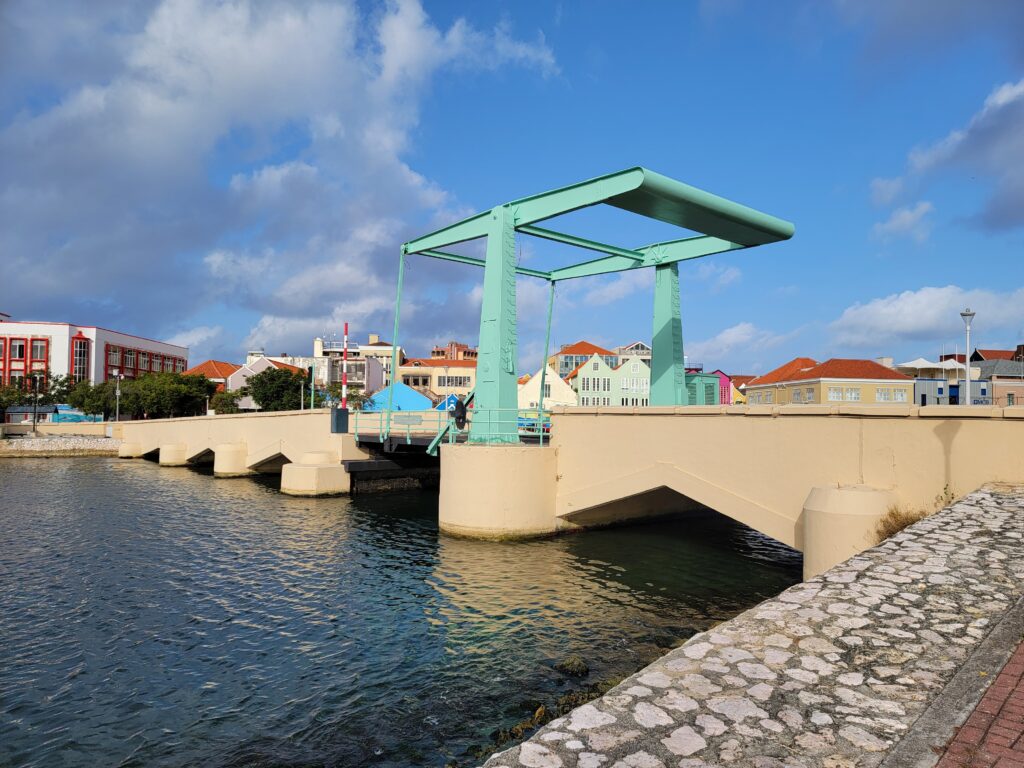
A movable bridge was originally needed as there used to be a dock in the Waaigat that required boat access to and from Sint Anna Bay. When the dock was destroyed and never rebuilt, the movable span became redundant, so the bridge now no longer opens.
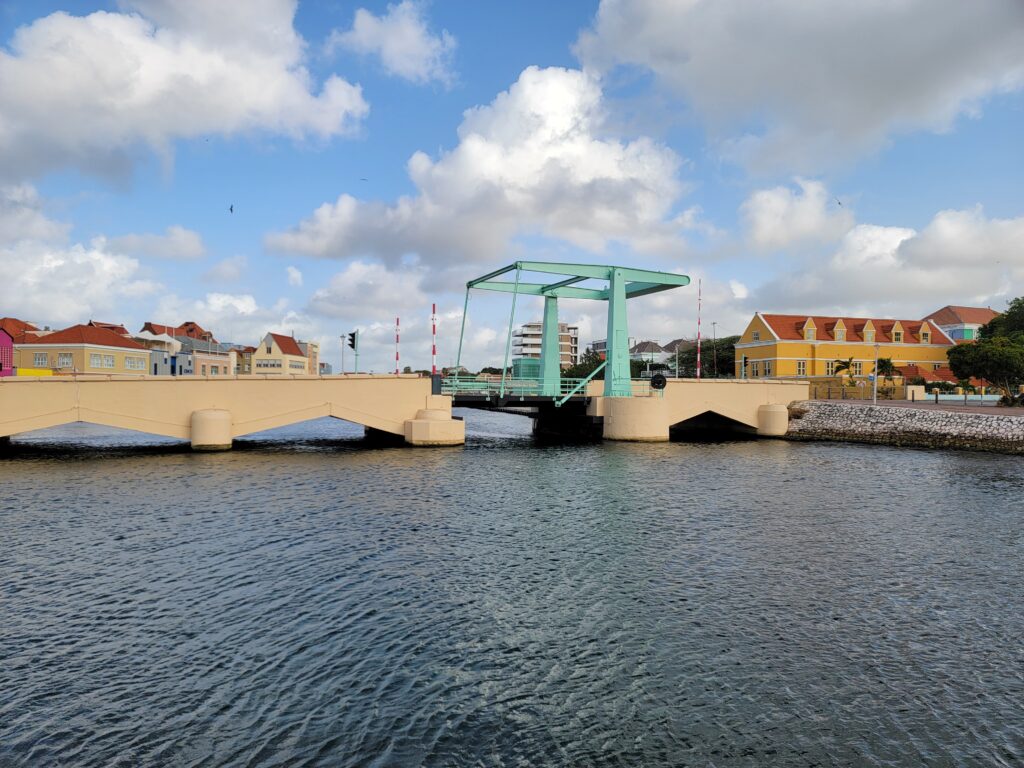
The westernmost bridge is the Leonard B. Smith Bridge, named in honor of the US consul and businessman credited with building the nearby Queen Emma Bridge. It is also a pedestrian only bridge and was dedicated in 2007. This bridge has a bit more of an architectural flair. Instead of the leafs meeting at their tips, both leaves span the full length of the channel, resulting in an open break over the full length of the moving section. This bridge is essentially two Hamei types combined together.
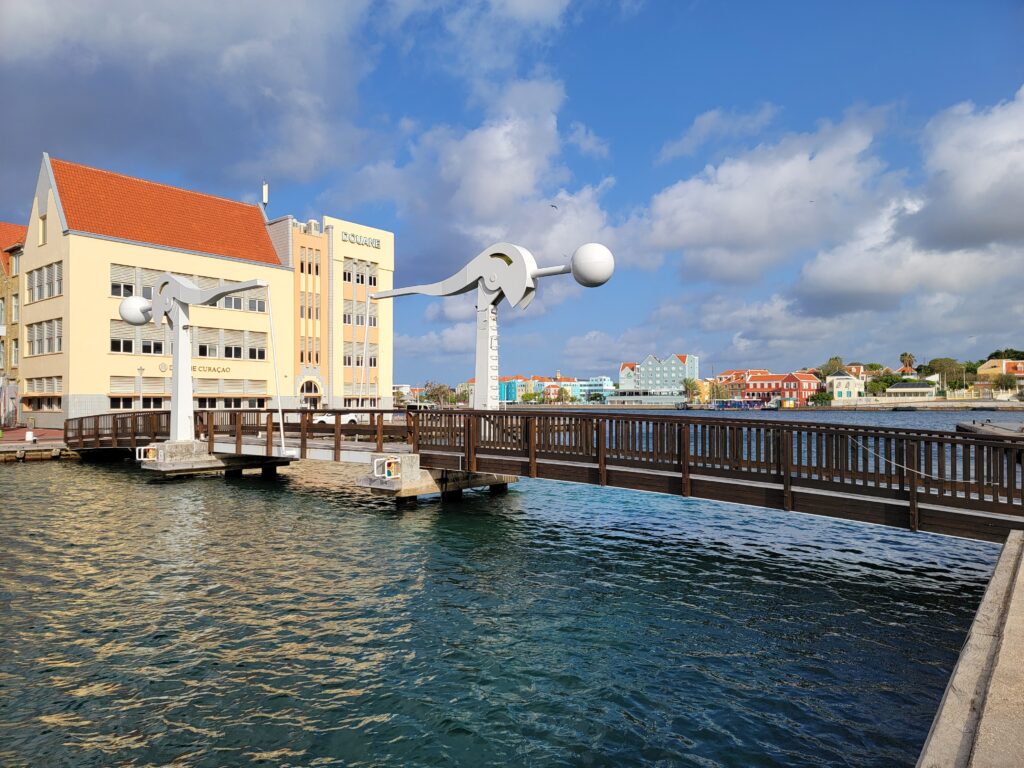
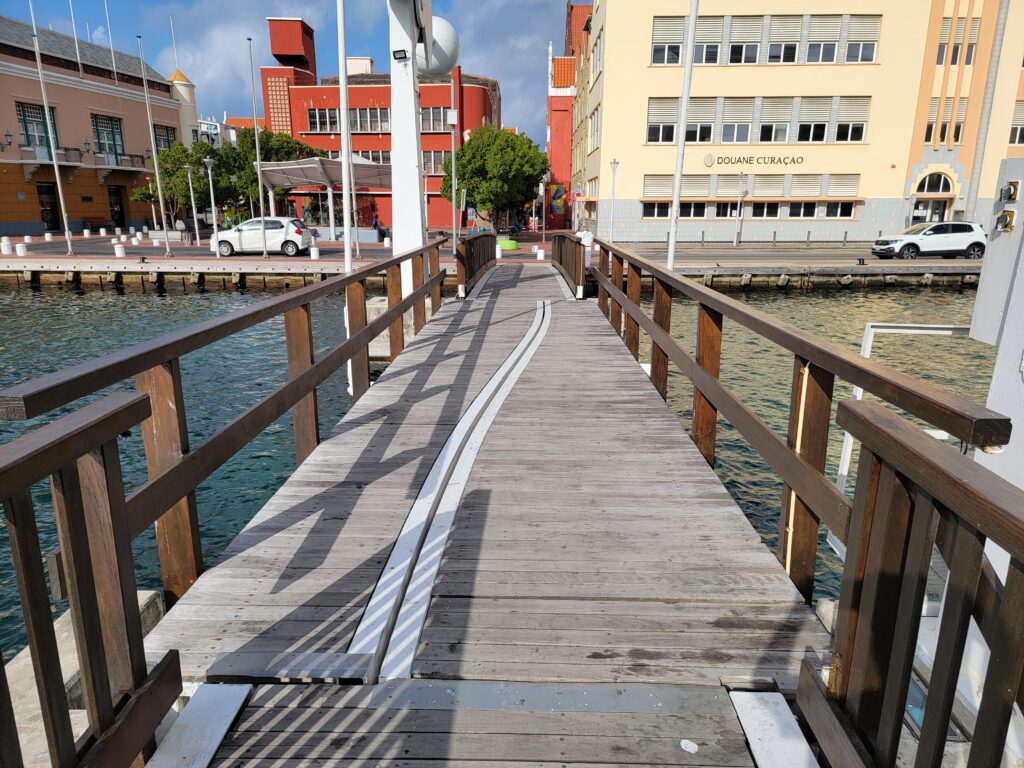
There is a single balance beam for each leaf, also unusual. Since the pivot is eccentric to the tower in one direction and the weight of the leaf is eccentric in another, the hamei are carrying axial compression as well as bi-axial flexure. The balance beams are also quirky and kind of space age, with the large round counterweights.
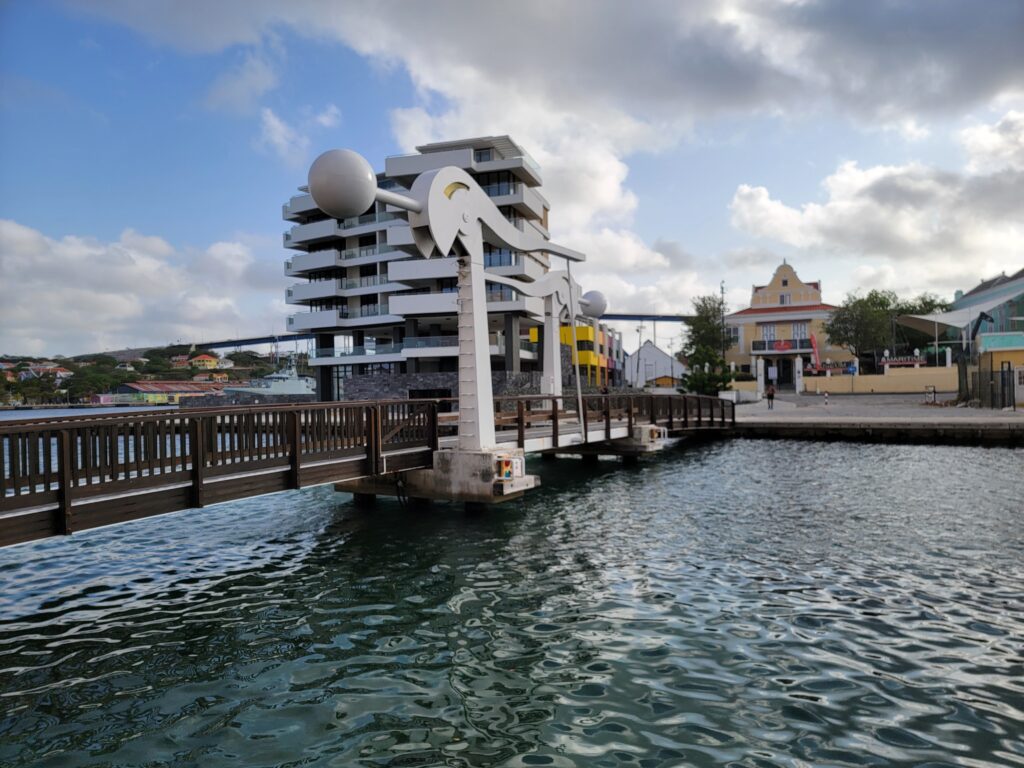
I’m a little unsure how this one operates. There is no discernable rack attached to the hamei or deck, so I assume force is applied by winched cable to the balance beam. This is all well hidden within the hamei. As far as I can tell, of the three bridges this is the only one that still needs to open at all to let boats in and out for the floating market.
Thanks for stopping by. Stay tuned for more on the bridges of Curaçao!
Views: 889